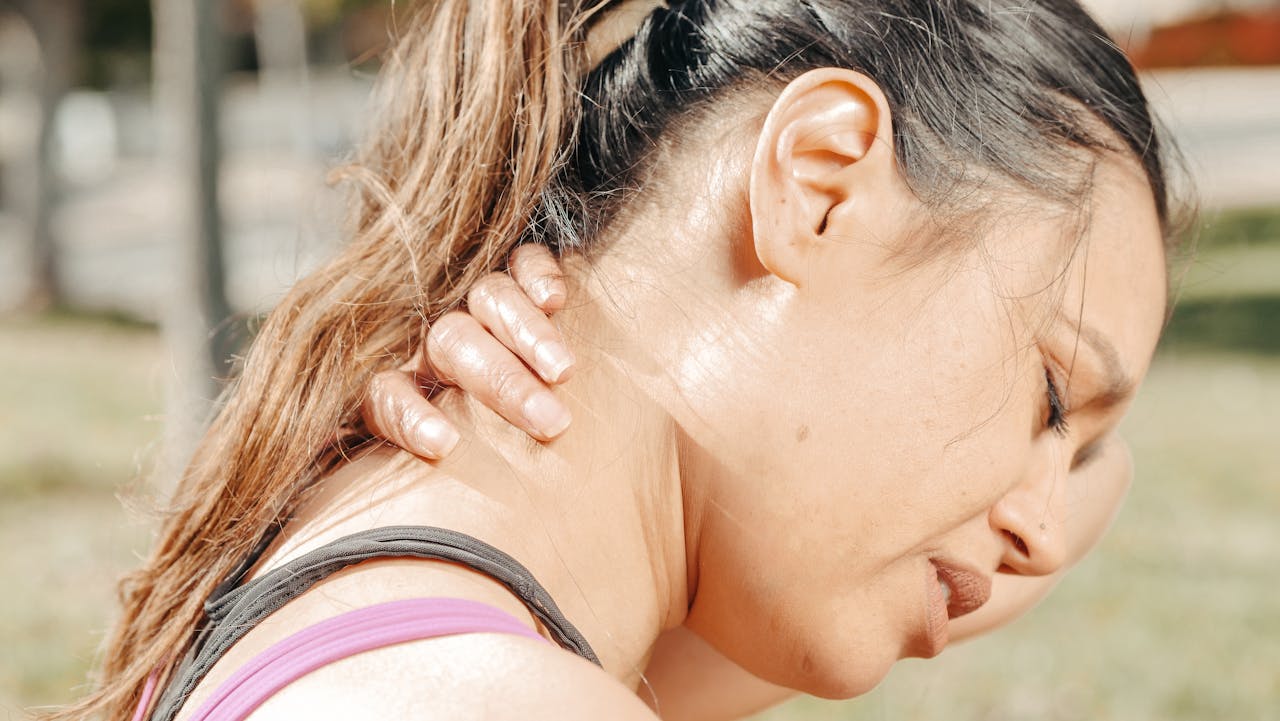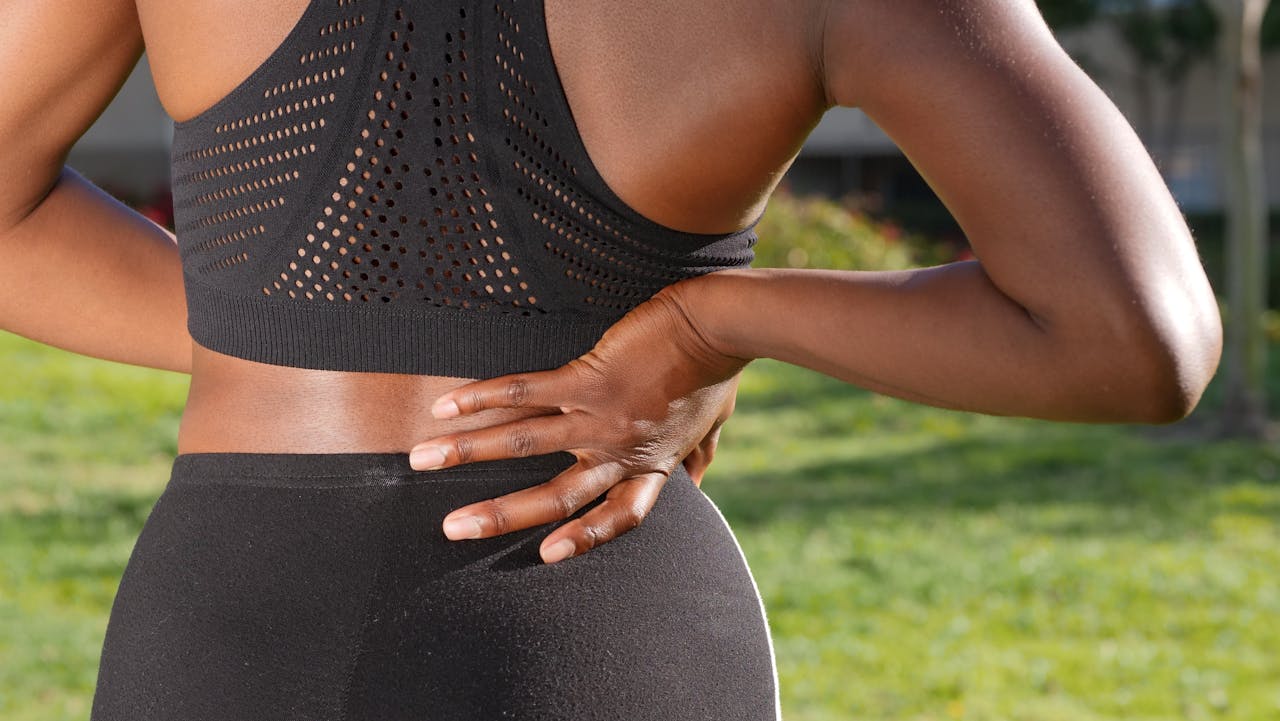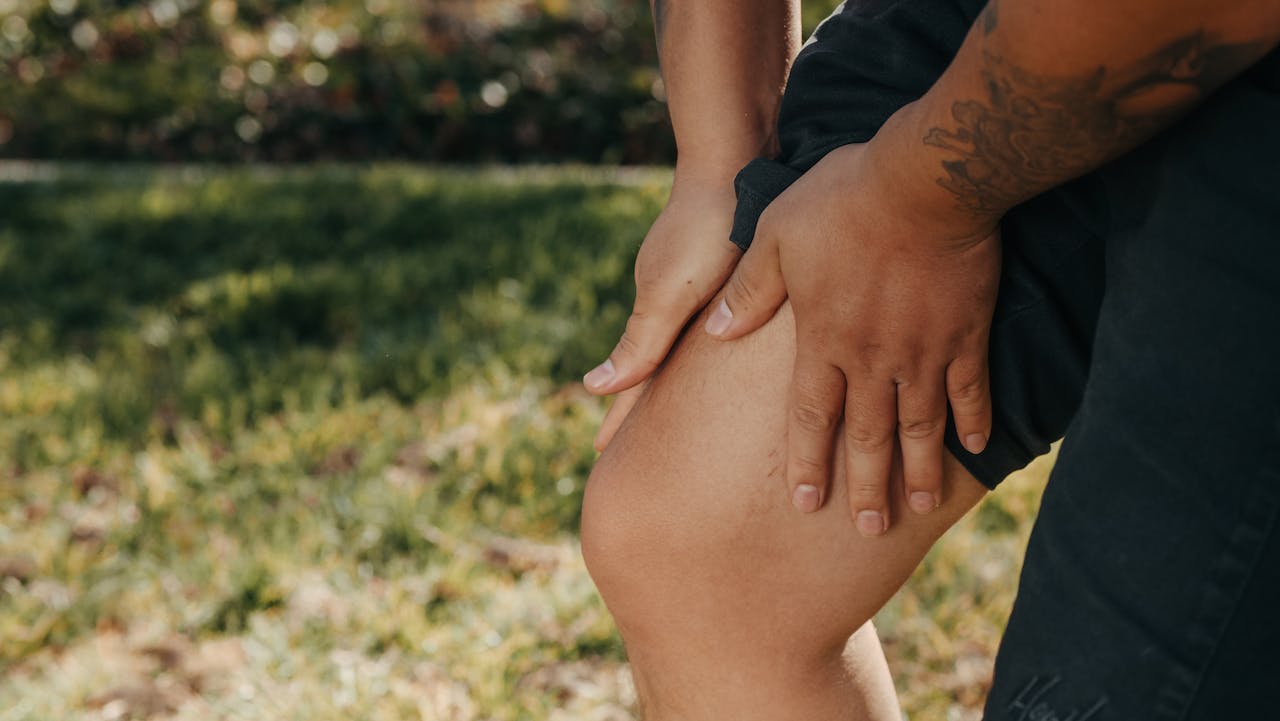Top 5 fitness injury checkup tips from healthcare experts
The direction to lengthy-term fitness achievement isn't always paved with "no ache, no gain" mentality—it's built on wise self-focus, proactive care, and expert guidance while wanted.

Source: Pexels
Sarah were crushing her CrossFit workouts for months. Her deadlifts had been getting heavier, her burpees quicker, and her confidence hovering. But one Tuesday morning, what started out as a minor twinge in her lower lower back at some point of heat-up became a pointy, shooting ache that left her crumpled at the health club floor. What she notion become just "normal" muscle pain had without a doubt been her frame's caution indicators—alerts she'd been ignoring for weeks.
Sarah's story is not unique. As health lifestyle explodes globally, from professional athletes pushing their limits to weekend warriors discovering the pleasure of motion, we are seeing an extraordinary upward thrust in exercise-related accidents. The Instagram-worthy gymnasium selfies and marathon end line images tell only part of the story. Behind the scenes, there may be a developing awareness that sustainable fitness is not just about pushing more difficult—it's about listening smarter.
This is where based fitness opinions come to be game-changers. Take the comprehensive paintings medical assessment in Australia, a scientific method at the beginning designed to evaluate health tiers and hit upon early signs of damage for employment functions.
These checks have evolved past place of work safety, now serving athletes and everybody in bodily worrying roles. Even elite training facilities like The Yard Singapore emphasize ordinary fitness checkups to make certain secure performance and long-time period health fulfillment.
The question isn't whether you will revel in a few form of health-related pain—it's how speedy you may understand the distinction between productive training strain and ability injury. Let's dive into the expert-subsidized strategies which can preserve you shifting thoroughly for years yet to come.
1. Don't ignore the pain – Listen to your body
Your frame speaks a sophisticated language, and ache is considered one of its most essential dialects. The venture? Most people are terrible translators. That burning sensation to your shoulders all through overhead presses might be normal muscle fatigue, or it can be your rotator cuff sending an SOS sign. Learning to distinguish between these messages may want to save you months of rehabilitation.
Dr. Michael Chen, a sports medication expert, places it honestly: "Pain is by no means just 'for your head.' It's your body's alarm machine, and ignoring it's far like putting off the batteries from your smoke detector." Sharp, taking pictures pains are obvious purple flags, but it's the diffused, persistent soreness that often gets brushed off as "a part of the technique."
Here's the expert distinction: muscle fatigue from a terrific exercising generally looks like a deep, fulfilling burn all through exercising and moderate discomfort 24-forty eight hours later. Injury ache, however, tends to be sharp, unexpected, or constantly nagging. It might get worse with precise actions or wake you up at night time.
Consider this real-global situation: During paintings medical tests in Australia, occupational health specialists routinely flag omitted shoulder or back pain in the course of guide hard work checkups. Workers often push aside those signs as "simply part of the activity," but early intervention prevents severe harm down the line. The equal principle applies in your fitness recurring—that nagging knee ache throughout squats is not a badge of honor, it's a caution signal.
The secret's growing frame awareness. Start every exercise with a brief intellectual test: How does your back experience? Any stiffness for your shoulders? Are each aspects of your body moving symmetrically? This isn't always paranoia—it's shrewd self-care.

Source: Pexels
2. Conduct a full mobility and flexibility assessment
Movement satisfactory trumps motion quantity whenever. You is probably capable of deadlift twice your frame weight, however if your hip mobility is critically limited, you are basically playing fitness Russian roulette. Dysfunctional movement styles do not simply limit overall performance—they invent damage breeding grounds.
Think of mobility evaluation like a vehicle inspection. You wouldn't drive pass-us of a without checking your tires, brakes, and engine, but many people dive into severe education with out comparing their movement foundation. Professional fitness centers apprehend this connection in detail.
At centers like The Yard Singapore, athletes undergo recurring screening for hip, knee, and shoulder mobility to reduce the risk of repetitive stress accidents. These checks are not simply fancy stretching sessions—they are systematic opinions that discover motion compensation styles before they emerge as problems.
The equipment do not need to be complex. Resistance bands can reveal shoulder blade balance troubles. A simple overhead squat check can reveal ankle mobility regulations that might be inflicting knee pain. Modern posture evaluation apps can offer baseline measurements for monitoring development through the years.
But right here's the important component: professional guidance matters. A educated eye can spot subtle motion dysfunctions that you might pass over. They'll word in case your left shoulder sits higher than your right, if your knees cave inward in the course of squats, or in case your spine loses its herbal curve throughout ahead bends.
The splendor of mobility paintings is its preventive strength. Addressing a minor hip flexor tightness now may prevent a first-rate again harm six months down the road. It's like fixing a small leak before it will become a flood.
3. Get a professional diagnostic scan (If needed)
Sometimes, what you can not see can hurt you. While most health-related discomfort resolves with relaxation and right movement, persistent ache may suggest underlying structural problems that require expert imaging to diagnose correctly.
Consider Jake, a recreational runner who'd been handling knee pain for months. Multiple running shoes advised it became simply "runner's knee" and advocated rest and stretching. When the pain endured, an MRI found out a small meniscus tear that required targeted remedy. Without right prognosis, Jake might have been going for walks towards a greater severe injury.
Diagnostic imaging—whether or not X-rays, MRIs, or ultrasounds—can screen hidden issues like ligament tears, stress fractures, or joint infection that are not visible from the outside. The key is knowing when those equipment are important as opposed to when they're overkill.
Work clinical checks in Australia often advocate diagnostic scans before approving individuals for high-risk or bodily traumatic jobs. This proactive technique acknowledges that hidden structural problems can grow to be predominant issues underneath stress. The identical good judgment applies for your health adventure—that nagging shoulder pain at some point of bench press would possibly reflect deeper rotator cuff harm that desires expert interest.
Red flags that might warrant imaging consist of ache that persists despite rest, ache that worsens through the years, numbness or tingling, or pain that drastically limits your range of motion. These aren't symptoms to "push through"—they are alerts that your body wishes expert assessment.
Remember, diagnostic scans are equipment, not magic bullets. They provide data that enables healthcare professionals broaden centered remedy plans. The aim isn't always to locate issues—it's to rule out severe problems and create a roadmap for secure return to pastime.

Source: Pexels
4. Evaluate muscle imbalances and posture
Your body is a complicated device of pulleys, levers, and counterbalances. When one a part of this device falls out of alignment, other components compensate, often leading to overuse injuries and chronic ache. Muscle imbalances and terrible posture are like faulty foundations—they may not motive instant problems, but they devise instability that ultimately leads to structural harm.
Picture the everyday desk employee who's determined a passion for weightlifting. Years of sitting have created tight hip flexors, weak glutes, and a ahead head posture. When they start doing squats and deadlifts, those imbalances do not magically disappear—they simply get amplified under load. The end result? Lower lower back pain, knee soreness, and shoulder impingement.
Common imbalances encompass uneven shoulder top, forward head posture, anterior pelvic tilt, and collapsed arches inside the feet. These would possibly look like cosmetic problems, however they're without a doubt motion dysfunctions that may predispose you to injury.
Progressive education facilities apprehend this connection. Experts at places like The Yard Singapore implement posture correction drills and complete power testing to cope with these imbalances earlier than they become issues. They apprehend that authentic health is not pretty much transferring weight—it's about shifting well.
The assessment procedure generally entails comparing muscle length, energy ratios among opposing muscle groups, and movement patterns at some point of useful sports. For instance, if your chest muscle mass are overly tight in comparison on your higher back muscle tissues, you might broaden rounded shoulders that restriction overhead mobility and growth harm chance.
Corrective strategies would possibly consist of targeted stretching for overactive muscle tissue, strengthening sporting events for underactive ones, and motion re-education to set up right styles. Think band pull-aparts for shoulder blade stability, glute activation physical games to counter hip flexor tightness, or center strengthening to support right spinal alignment.
The beauty of addressing imbalances is that it often improves overall performance at the same time as lowering damage threat. When your body moves efficaciously, you can teach more difficult and get better quicker.
5. Follow a gradual return-to-activity plan
The largest mistake human beings make after harm isn't during the harm itself—it is all through the return to hobby. The "I feel higher, so I'm returned to full intensity" technique is like looking to run a marathon after a month of bed relaxation. Your enthusiasm is probably a hundred%, but your tissues need time to adapt.
Progressive rehabilitation follows a logical collection: relaxation permits preliminary recuperation, mobility work restores range of motion, mild resistance rebuilds power, and eventually, you come to complete workout intensity. Skipping steps or speeding the procedure dramatically will increase re-injury danger.
Consider Maria, a yoga instructor who strained her hamstring for the duration of a tough pose. After every week of relaxation, she felt extensively better and immediately returned to her complete teaching agenda. Within days, the injury turned into worse than before. She'd harassed pain discount with tissue recuperation—a steeply-priced mistake.
The return-to-hobby development generally follows this sample:
Phase 1: Rest and Protection - Allow acute infection to subside and keep away from activities that worsen signs and symptoms.
Phase 2: Restore Mobility - Gentle range of motion physical activities and stretching to save you stiffness.
Phase 3: Rebuild Strength - Progressive resistance schooling beginning with light loads and high repetitions.
Phase 4: Return to Function - Sport-specific or hobby-unique movements at progressively growing intensities.
Certified experts who prepare tailor-made go back-to-hobby plans understand that recuperation isn't linear. Some days you will sense outstanding, others you might have minor setbacks. The key's consistency and endurance, now not perfection.
This methodical approach is likewise central to work medical assessment in Australia, mainly while workers are returning post-harm. Employers understand that speeding a person back to complete obligation often leads to re-injury, misplaced productivity, and higher healthcare fees. The equal precept applies in your fitness desires—sluggish and steady wins the race.
Bonus tips for injury prevention
Beyond the main 5 strategies, several extra practices can drastically reduce your injury risk and decorate recuperation.
Warm-up and cooldown exercises are non-negotiable. Dynamic stretching prepares your muscular tissues for hobby by way of growing blood flow and joint mobility. Post-exercise foam rolling enables keep tissue great and decrease stiffness. These are not simply feel-correct activities—they are harm prevention gear.
Nutritional aid for restoration plays a crucial position in recovery. Adequate protein intake gives the constructing blocks for tissue repair. Proper hydration helps nutrient delivery and waste removal. Anti-inflammatory meals like fatty fish, leafy vegetables, and berries can help control exercising-caused irritation.
Some sports centers take a truely holistic approach to damage prevention. Centers like The Yard Singapore consist of nutrition counseling and physiotherapy as a part of their comprehensive injury prevention applications. They recognize that fitness fulfillment calls for greater than simply workout—it needs interest to healing, vitamins, and movement satisfactory.
Sleep best additionally merits point out. Most tissue restore happens during deep sleep, making ok rest vital for damage prevention and restoration. Poor sleep doesn't simply make you worn-out—it will increase harm risk and slows recuperation.
When to see a specialist
Knowing when to are seeking professional assist may be the difference among a minor setback and a first-rate harm. Some symptoms demand immediately attention, while others can be controlled with conservative care.
Urgent signs and symptoms that warrant professional assessment encompass chronic swelling that does not respond to relaxation and ice, numbness or tingling that might suggest nerve involvement, considerable hassle in range of movement, or joint locking or instability. These signs and symptoms advise ability structural harm that calls for professional analysis and remedy.
The healthcare group for fitness accidents normally consists of several experts. Physiotherapists excel at motion analysis and developing corrective workout programs. Orthopedic experts can diagnose and treat structural problems like fractures or ligament tears. Sports physicians recognize the particular demands of athletic sports and can provide recreation-unique guidance.
In many regions, employers take injury prevention significantly. In Australia, many employers require paintings clinical exams earlier than reintegration into physical roles, recognizing that proper evaluation prevents re-injury and guarantees worker protection.
Don't wait till pain will become unbearable to are seeking assist. Early intervention is sort of continually extra effective and much less costly than treating continual issues. Think of healthcare professionals as a part of your health team, not just emergency responders.
Conclusion
The direction to lengthy-term fitness achievement isn't always paved with "no ache, no gain" mentality—it's built on wise self-focus, proactive care, and expert guidance while wanted. Sarah's tale from our commencing would not need to be yours. By implementing these 5 professional-encouraged techniques, you're now not simply stopping injuries—you're investing in a lifetime of wholesome movement.
The most successful athletes and fitness lovers apprehend that medical oversight is not a signal of weak point—it is a marker of information. Whether you're working with sports medicine specialists, using comprehensive applications like those at The Yard Singapore, or profiting from established paintings medical evaluation in Australia protocols, the message remains consistent: your frame is your maximum treasured piece of gadget, and it deserves expert-degree protection.
Remember, every global-magnificence athlete has a group of experts helping them live wholesome and perform at their great. You deserve the identical level of care and interest, no matter whether or not you are schooling for the Olympics or just seeking to preserve up with your kids at the playground.
The question isn't whether or not you will face physical demanding situations for your fitness journey—it's how nicely you'll put together for them. Start taking note of your body today, due to the fact the communication it is having with you might be the maximum essential one you'll ever have about your fitness.
